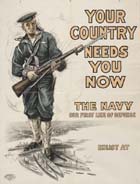 |
||
 |
||
Gallery
|
 Giacomo Balla's Dog on a Leash, 1912 |
 35 mm. camera Germany 1913 |
 Gramophone recording Indian songs, 1913 |
 U.S. World War I recruiting poster, 1914 |
|
|
Fernand Léger's The Railway Crossing, 1919 |
Copyright © Irving Fang and Kristina Ross, 1995-1996. All rights reserved.